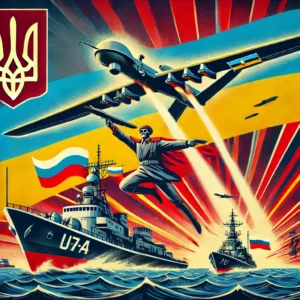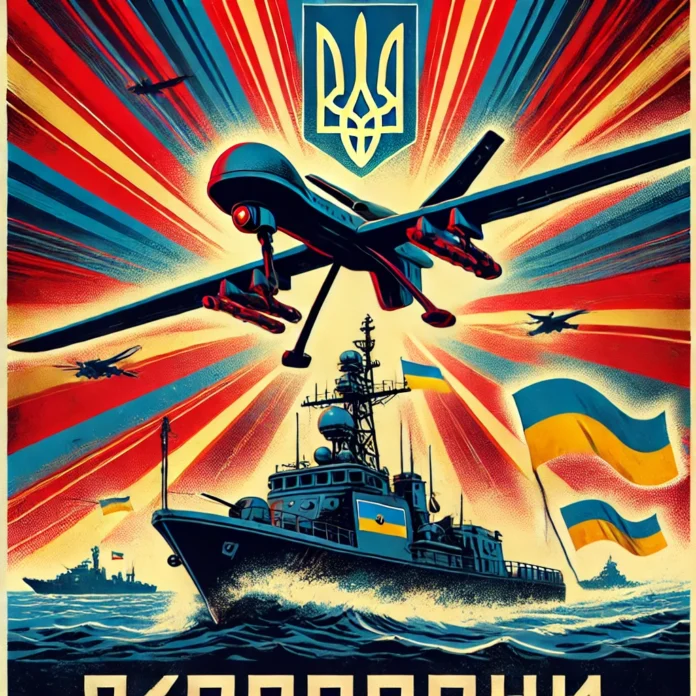The war between Ukraine and Russia has showcased how drone technology has transformed modern warfare. Ukrainian drones have played a pivotal role on the battlefield, providing vital intelligence, carrying out precision strikes, and disrupting enemy operations. This article explores the evolution of Ukrainian drones, their current use in the conflict, and what the future holds for this technology.
The Past: How Ukrainian Drone Technology Evolved
Early Beginnings and Adoption
Ukraine’s journey into drone warfare began before the full-scale invasion by Russia in 2022. In response to the annexation of Crimea in 2014 and ongoing conflict in eastern Ukraine, Ukraine started investing in drone technology for reconnaissance and intelligence gathering. The first step involved acquiring foreign drone systems like the Turkish-made Bayraktar TB2. These drones had already proven their effectiveness in other conflicts, providing Ukraine with a much-needed advantage in terms of long-range strikes and real-time battlefield intelligence.
Alongside these imports, Ukraine began developing domestic drones such as the Leleka-100, which was designed for reconnaissance missions. These early efforts helped Ukraine understand the role drones could play in modern warfare, paving the way for future innovation and development.
Lessons Learned
During the early phases of drone use, Ukraine saw both the strengths and weaknesses of drones on the battlefield. The Bayraktar TB2 played a critical role, but its reliance on air superiority and vulnerability to electronic warfare became evident. This led Ukraine to diversify its drone fleet, incorporating more versatile drones, such as the DJI Mavic 3, a commercial drone that could be modified for military use. These experiences laid the foundation for more advanced and diverse drone technologies that Ukraine would later develop.
Ukrainian MAGURA V5 Drones: Impact on Russian Black Sea Fleet
The Present: Ukrainian Drones in the Russia-Ukraine War
Today, drones are a critical part of Ukraine’s military strategy. Below are some of the key drones currently in use:
1. MAGURA V5
Capabilities:
The MAGURA V5 is a powerful unmanned surface vessel (USV) designed for maritime operations. It can carry a 320-kilogram payload, operate at a range of up to 800 kilometers, and is equipped with GPS, high-resolution cameras, and remote weapon stations.
Achievements:
The MAGURA V5 has been highly effective, damaging or destroying 18 Russian vessels, including the corvette Ivanovets and the landing ship Caesar Kunikov.
Impact:
By using the MAGURA V5, Ukraine has created a strategic buffer zone in the Black Sea, significantly disrupting Russian naval operations and safeguarding Ukraine’s coastal waters.
MAGURA V5 Stealth: A Game-Changer in Ukrainian Naval Warfare
2. Bayraktar TB2
Capabilities:
The Bayraktar TB2 is an armed unmanned aerial vehicle (UAV) with a range of 300 kilometers and can carry laser-guided munitions.
Achievements:
The Bayraktar TB2 has been instrumental in stopping Russian advances in the early phases of the war, targeting Russian artillery, tanks, and supply convoys.
Impact:
The drone has enhanced Ukraine’s long-range strike capabilities, allowing for precision attacks and giving Ukraine a strong tool for both offense and defense.
3. Shahed-131 and Shahed-136 Analogues
Capabilities:
The Shahed-131 and Shahed-136 drones are low-cost, mass-produced drones designed for reconnaissance and combat. They are modeled after Iranian designs and are used in swarm tactics to overwhelm enemy defenses.
Achievements:
By producing these drones in large numbers, Ukraine has been able to conduct sustained drone attacks, which have disrupted Russian military movements.
Impact:
The mass production of these drones has increased Ukraine’s ability to launch frequent and persistent strikes, putting constant pressure on Russian forces.
4. DJI Mavic 3
Capabilities:
The DJI Mavic 3 is a commercially available drone that has been modified by Ukrainian forces for military use. It can be equipped with small munitions, such as grenades, and is used for reconnaissance, artillery targeting, and direct attacks.
Achievements:
This drone has been widely used by Ukrainian infantry to scout enemy positions and direct artillery fire.
Impact:
The DJI Mavic 3 has proven to be a cost-effective solution for Ukraine’s frontline operations, providing flexibility and precision at a low cost.
5. Leleka-100
Capabilities:
The Leleka-100 is a lightweight UAV designed for reconnaissance and surveillance missions, equipped with advanced cameras for gathering intelligence.
Achievements:
This drone has been used extensively to monitor Russian movements and provide real-time intelligence for military decision-making.
Impact:
The Leleka-100 has enhanced Ukraine’s situational awareness, enabling better planning and reducing the risk of ambushes.
The Impact of Ukrainian Drones on the Battlefield
1. Strategic Advantage
Drones have given Ukraine a strategic advantage by allowing it to conduct long-range strikes and gather critical intelligence. This capability has forced Russian forces to adjust their strategies and dedicate more resources to defending against drone attacks.
2. Disruption of Russian Operations
The effectiveness of Ukrainian drones has significantly disrupted Russian military operations. Drones like the Bayraktar TB2 and MAGURA V5 have hit key Russian assets, forcing the enemy to adopt new defensive measures.
3. Boosted Morale
Successful drone operations have also boosted the morale of Ukrainian forces. Videos of drones targeting and destroying Russian equipment have gone viral, showing that even in the face of a superior enemy, technology can level the playing field.
4. International Support
Ukraine’s effective use of drones has drawn international attention, resulting in increased military aid from countries like the United States, Turkey, and the UK. Ukraine’s success with drones has also helped shape global military strategies, as other nations look to adopt similar technologies.

The Future of Ukrainian Drone Warfare
1. Further Development
Ukraine is expected to continue developing advanced drones with longer ranges, better stealth features, and improved payloads. The future of Ukrainian drones will likely see more autonomous systems, where drones can conduct missions with minimal human input.
2. Increased Production
The mass production of drone models, such as the Shahed analogues, will remain a priority. Ukraine’s ability to produce drones on a large scale will ensure a steady supply for ongoing and future conflicts.
3. Advanced Features
Future drones may include air-to-air guided missiles, improved radar-evading capabilities, and longer operational times, giving Ukraine even more tools to conduct complex and far-reaching operations.
4. Autonomy and AI Integration
AI-powered drones may be the next frontier, with drones making real-time decisions without human oversight. These drones could conduct patrols, coordinate strikes, and adjust to battlefield conditions autonomously.
5. Hybrid and Submersible Drones
Given the success of the MAGURA V5, Ukraine may invest in hybrid drones capable of operating both on the surface and underwater. Submersible drones would provide Ukraine with new opportunities for covert reconnaissance and attacks on enemy submarines and naval assets.
Conclusion: A New Era of Asymmetric Warfare
Ukrainian drones have redefined the way wars are fought, providing tactical and strategic advantages that have forced Russia to rethink its approach. From the early use of drones like the Bayraktar TB2 to the domestically produced MAGURA V5, Ukraine has proven itself to be a leader in drone warfare.
These innovations have not only helped Ukraine defend its territory but have also reshaped the future of military strategy globally. The development of more advanced, autonomous drones will ensure that Ukraine remains at the cutting edge of warfare, providing the tactical flexibility and precision necessary to combat a larger and better-equipped enemy.
As drones continue to evolve, Ukraine’s success with drone warfare offers critical lessons to militaries worldwide, highlighting the importance of adaptation, innovation, and persistence in the face of adversity.


